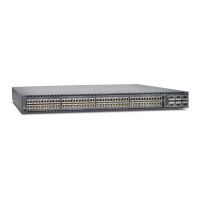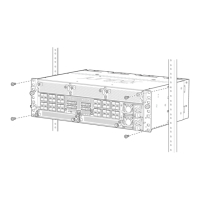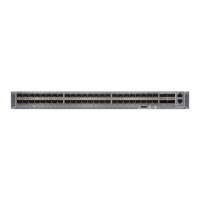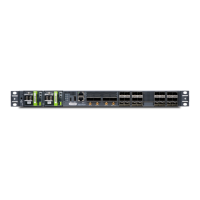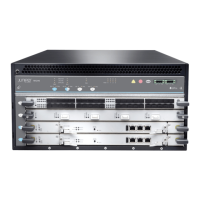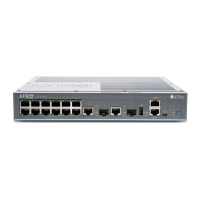CAUTION: Do not bend fiber-optic cables beyond their minimum bend
radius.An arc smallerthan a few inches in diametercan damagethe cables
and cause problems that are difficult to diagnose.
Do not let fiber-optic cables hang free from the connector. Do not allow
fastened loops of cables to dangle, which stresses the cables at the
fastening point.
Replacing an ACX1000 or ACX1100 Transceiver
Small form-factor pluggable transceivers (SFPs) are optical transceivers that are installed
in the front panel of the ACX1000 and ACX1100 router. Transceivers are hot-insertable
and hot-removable.
1.
Removing an ACX1000 or ACX1100 Transceiver on page 125
2.
Installing an ACX1000 or ACX1100 Transceiver on page 126
Removing an ACX1000 or ACX1100 Transceiver
Removing a transceiver does not interrupt router functioning, but the removed transceiver
no longer receives or transmits data.
To remove a transceiver (see Figure 32 on page 126):
1. Have ready a replacement transceiver or a transceiver slot plug, an antistatic mat,
and a rubber safety cap for the transceiver.
2. Attach an ESD grounding strap to your bare wrist and connect the strap to one of the
ESD points on the chassis.
3. Label the cables connected to the transceiver so that you can reconnect them correctly
later.
WARNING: Do not look directly into a fiber-optic transceiver or into the
ends of fiber-optic cables. Fiber-optic transceivers and fiber-optic cable
connected to a transceiver emit laser light that can damage your eyes.
4. Remove the cable connector from the transceiver.
5. Pull the ejector handle out from the transceiver to unlock the transceiver.
CAUTION: Make sure that you open the ejector handle completely until
you hear it click. This action prevents damage to the transceiver.
125Copyright © 2017, Juniper Networks, Inc.
Chapter 16: Installing and Replacing Components
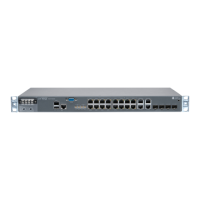
